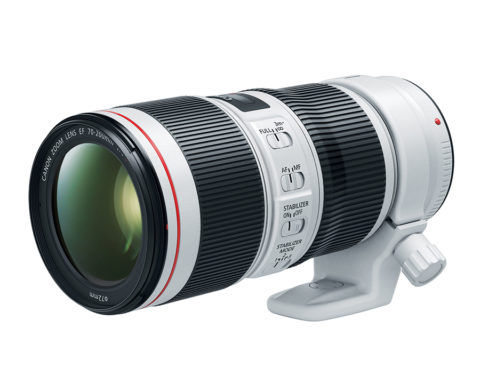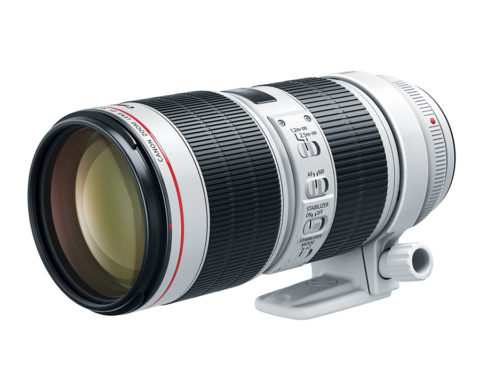The Curious Case of Canon’s new 70-200 L Lenses
Canon just announced 2 new “updated” 70-200mm pro zoom lenses. The 3rd generation EF 70-200mm f/2.8L IS III USM, and the second generation EF 70-200mm f/4L IS II USM. Of course with any new product release, there’s a lot of talk around the net about these lenses, and what Canon has and hasn’t done with them, and ultimately why Canon is doomed because of what they did or didn’t do.
Anyway, I can’t help but throw my 2 cents into the fray on this discussion. So here it goes.
EF 70-200mm f/4L IS II USM

I’m going to start with the f/4 lens since it has the most obvious outward changes, at least relative to it’s predecessor. Of course, at the same time, this should be the case. The first generation 70-200mm f/4L IS is more than a decade old now (released in 2006). In the intervening time, Canon has already updated the f/2.8L IS version once already.
As such, I would expect to see quite a lot of changes, and that seems to be the case.
Aside from the external cosmetic changes, the IS system is now rated for 5 stops, not 4, and includes IS Mode 3. In mode 3, the lens measures the necessary stabilization corrections, but doesn’t actually move the stabilizer element until the shutter is released.
Mode 3 is intended for use with erratically moving subjects. By not moving the stabilizing elements until the very last moment, the system helps keep the stabilizer element from reaching the limits of motion and thus maintain more range to use to stabilize the image.
The new optical and mechanical design allows the minimum focus distance to be reduced from 1.2 m to 1m (3.9 ft. to 3 ft.). This is something that I consider a reasonably nice improvement, since one of the reasons I ended up buying a set of extension tubes was to use with my EF 70-200mm f/4L IS USM in certain instances.
Finally, the front and rear elements have Canon’s Fluorine based coatings which reduce the ability for oils and water to adhere to the lens.
One potentially negative point is that the new lens now has a larger front element, and therefore filter size. The first gen lens used a 67mm filter, and the new one uses a 72mm filter. 5mm (~0.2″) isn’t a huge change in filter size, and probably won’t translate to a huge change in how the lens packs or handles. However, it does mean new filters, mounting rings, or step up rings depending on how you go about filtering your lenses.
What hasn’t change, at least not appreciably, is the tripod collar and lens hood. The new ET-74B hood is a simple conical hood — that is not a petal hood — and it’s a bit of a mixed bag from what I can tell.
Canon has apparently simplified the manufacturing process, by removing the flocked lining that was used on it’s predecessor for flare control. Instead the hood relies on plastic ridges to mitigate reflections. This isn’t an entirely unusual practice, and it is generally effective at mitigating reflections, but it’s a first (at least to my knowledge) in a Canon L lens. On one hand, my position on this is that if it works, I’m fine with it; it’s certainly easier to clean the hood if you don’t have to worry about flocking. On the other hand, it does feel a little bit cheaper, and I can see where that might annoy some people.
On the other hand, the hood now uses Canon’s current standard locking mechanism which features a small push button to unlock the hood for rotation. In my experience this is a vastly superior system to the previous friction fit only approach.
The other thing that’s missing is the circular polarizer door that’s found on the hood for the EF 100-400mm f/4.5-5.6L IS II USM. Whether this is a pro or con is something that’s open for debate. On one hand, on paper at least, I like the idea of having an access door so I can adjust a polarizer mounted on the front of a lens. On the other hand, on my 100-400 the door always seems to pop open when I want it to stay close, and that just annoys me.
All told, the second generation EF 70-200mm f/4L IS II USM looks to be a pretty reasonable step up from it’s predecessor, but then in most respects it should be.
EF 70-200mm f/2.8L IS III USM

That brings me to the EF 70-200mm f/2.8L IS III USM, Canon’s 3rd generation of an image stabilized f/2.8 70-200 zoom. The question, however, appears to be just how much of a 3rd generation this lens really is.
Lets start with the optics. They’re identical to the predecessor. Canon’s own articles on the matter say the following.
It’s very important to be clear that the EF 70–200mm f/2.8L IS III USM lens has not changed: the glass in this lens is the same as its predecessor. The optical design itself, highlighted by one Fluorite and five UD-glass (Ultra-low Dispersion) elements, remains exactly the same as with the highly-regarded f/2.8 Version II design. Accordingly, specs like minimum focus distance remain unchanged.
Admittedly, the EF 70-200mm f/2.8L IS II USM is a very good lens. One that’s hard to find fault in the image quality of even.
This all raises a real obvious question, what’s the point of the EF 70-200mm f/2.8L IS III USM then?
I suspect the real answer to this comes from something we can’t readily see. The engineering and especially the manufacturing.
For the last 5 years or so, Canon has been heavily focused on designing lenses that are more manufacturable, hold better tolerances, and generally be better built. Ultimately, their goal seems to be to increase the amount of automation in their manufacturing process, and that means creating designs that are more amendable to that process.
It’s my suspicion that that when push comes to shove, the changes in the 3rd generation 70-200/2.8L IS are largely about making the lens easier to manufacture. Of course, we’ll have to wait for Lens Rentals or someone else to tear one of these lenses apart to know for sure.
That said the lens isn’t completely unchanged.
While Canon claims the mechanical design is unchanged, they also list the new lens as being approximately 50g (1.8 oz.) lighter than it’s predecessor. So either the measurement standard has changed, or they’ve changed something in the structure that’s reduced the weight slightly.
Aside from the cosmetics, the lens now uses Canon’s air-sphere coatings which reduce flare and improve contrast, and an improved Super-Spectra coating. Additionally the outer surfaces are coated with their Fluorine based anti-smudge coatings.
What really confuses me though is that they could have easily taken this opportunity to make a number of small but otherwise appreciable updates to the lens.
For example, the IS system is the same as the mark II. The rated performance is 3.5 stops instead of, “approximately 4 stops,” but this is likely due to different CIPA driven testing standards.
However, by retaining the same old design, they didn’t add an IS mode 3 option. Somethign that did appear on the new f/4L version. Adding mode 3 to the IS system should have required little more than a new switch and the associated firmware to go with it. Not exactly a significant undertaking, and it would homogenize the lens’s capabilities with the rest of their modern telephoto zooms.
Likewise, the tripod mount is the same as the mark II’s. While it’s not a horrible collar, it certainly lesser than the tripod collar on the EF 100-400mm f/4.5-5.6L IS II USM. The latter is incredibly smooth and lacks any discontinues from the rollers/guides aligning with the holes that allows the mount to be removed. Not a huge deal, but still if they’re going to bother “updating” the lens, it wouldn’t have been a huge deal to update that too.
Finally there’s the lack of a new hood. Fortunately, the ET-87 hood is already a button locked design. In fact, I believe it was one of the first hoods Canon changed to this far superior system. However, the hood also lacks the polarizer access door, such as exists on the 100-400 mark II’s hood.
In short, this is not an upgrade lens for existing EF 70-200mm f/2.8L IS II USM owners. This is certainly a replacement, and one that hopefully is more robust and easier for Canon to manufacture, but it’s not for existing mark II owners.
On the other hand, if you don’t already own an EF 70-200mm f/2.8L IS II USM, and you’re looking for an 70-200mm f/2.8 lens, there’s little reasons — ignoring the current rebates that are obviously in placed to clear out old stock — not to go for this. It’s the same price (again ignoring rebates) with a equal to slightly better performance envelope (less flare) than it’s predecessor. I just don’t get why Canon didn’t go a bit further with it.
Comments
There are no comments on this article yet. Why don't you start the discussion?